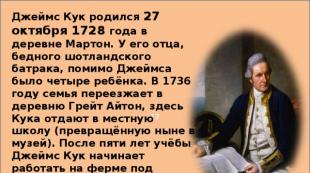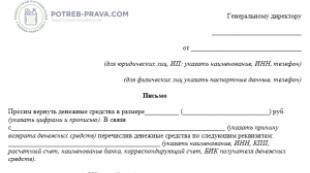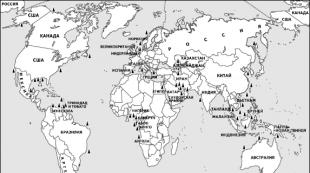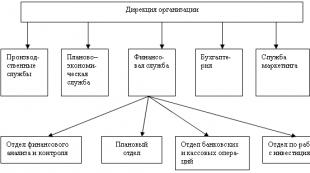Presentation - pedagogical communication and its functions. Presentation on the topic: Pedagogical communication Functions and styles of pedagogical communication presentation














1 of 14
Presentation on the topic: Styles of pedagogical communication
Slide no. 1

Slide description:
Slide no. 2

Slide description:
Styles of pedagogical communication clarity of the social and professional position of the teacher Navigation through the presentation slides is carried out by time You can also use the link menu on the right side of the slide → Back to top Position of the teacher Communication style and teacher Types of styles Authoritarian style: signs, results Permissive style: signs, results Democratic style: signs signs (continued), results Let's repeat the types of styles To the end
Slide no. 3

Slide description:
The position of a teacher is a system of intellectual and emotional-evaluative attitudes towards the world, pedagogical reality and pedagogical activity To the beginning Position of a teacher Communication style and teacher Types of styles Authoritarian style: signs, results Permissive style: signs, results Democratic style: signs signs (continued), results Let's repeat the types of styles To the end The position of a teacher is a system of intellectual and emotional-evaluative attitudes towards the world, pedagogical reality and pedagogical activity
Slide no. 4

Slide description:
The style of communication inevitably reflects the general and pedagogical culture of the teacher and his professionalism. The style of pedagogical communication is considered in close connection with the general style of pedagogical activity. The style of pedagogical communication expresses the characteristics of the teacher’s communicative capabilities; the existing nature of the relationship between the teacher and students; creative individuality of the teacher; characteristics of students. To the beginning Position of the teacher Communication style and teacher Types of styles Authoritarian style: signs, results Permissive style: signs, results Democratic style: signs signs (continued), results Let’s repeat the types of styles To the end
Slide no. 5

Slide description:
Types of styles (according to Kurt Lewin, 1938) To the beginning Position of the teacher Communication style and teacher Types of styles Authoritarian style: signs, results Permissive style: signs, results Democratic style: signs signs (continued), results Let's repeat the types of styles In the end
Slide no. 6

Slide description:
Authoritarian style The teacher alone decides all issues related to the life of both the class team and each student. Based on his own attitudes, he determines the position and goals of interaction, and subjectively evaluates the results of activities. Students do not participate in the discussion of problems that are directly related to them, and their initiative is assessed negatively and rejected. The authoritarian style of communication is implemented using didactic and tutelage tactics; students’ resistance to the teacher’s authoritative pressure most often leads to the emergence of persistent conflict situations. Back to top Position of the teacher Communication style and teacher Types of styles Authoritarian style: signs, results Permissive style: signs, results Democratic style Chinese style: signs signs (continued), results Let's repeat the types of styles To the end
Slide no. 7

Slide description:
Authoritarian style Teachers who adhere to this style of communication do not allow students to show independence and initiative. They are distinguished by lack of understanding of students and inadequacy of assessments. External indicators of the success of authoritarian teachers are most often positive. But the socio-psychological atmosphere in such groups is, as a rule, unfavorable. An authoritarian style of communication gives rise to inadequate self-esteem in students, instills a cult of power, and causes an inadequate level of aspirations in communicating with other people. To the beginning Position of the teacher Communication style and teacher Types of styles Authoritarian style: signs, results Permissive style: signs, results Democratic style: signs signs (continued), results Let’s repeat the types of styles To the end
Slide no. 8

Slide description:
Permissive style Characterized by the teacher’s desire to be minimally involved in the activity, which is explained by the removal of responsibility for its results. Such teachers formally fulfill their functional responsibilities. To the beginning Position of the teacher Communication style and teacher Types of styles Authoritarian style: signs, results Permissive style: signs, results Democratic style: signs signs (continued), results Let’s repeat the types of styles To the end
Slide no. 9

Slide description:
Permissive style The permissive style of communication implements tactics of non-interference, the basis of which is indifference and disinterest in the problems of students. To the beginning Position of the teacher Communication style and teacher Types of styles Authoritarian style: signs, results Permissive style: signs, results Democratic style: signs signs (continued), results Let’s repeat the types of styles To the end
Slide no. 10

Slide description:
democratic style With this style of communication, the teacher is focused on increasing the role of the student in interaction, on involving everyone in solving common affairs. The main feature of this style is mutual acceptance and mutual orientation. As a result of an open and free discussion of emerging problems, students together with the teacher come to one solution or another. To the beginning Position of the teacher Communication style and teacher Types of styles Authoritarian style: signs, results Permissive style: signs, results Democratic style: signs signs (continued), results Let’s repeat the types of styles To the end
Slide no. 11

Slide description:
democratic style Teachers who adhere to this style are characterized by an active and positive attitude towards students, an adequate assessment of their capabilities, successes and failures. They are characterized by a deep understanding of the student, the goals and motives of his behavior, and the ability to predict the development of his personality. To the beginning Position of the teacher Communication style and teacher Types of styles Authoritarian style: signs, results Permissive style: signs, results Democratic style: signs signs (continued), results Let’s repeat the types of styles To the end
Slide no. 12

Slide description:
democratic style In terms of external indicators of their activities, teachers with a democratic communication style are inferior to their authoritarian colleagues. But the socio-psychological climate in their groups is always more favorable. Interpersonal relationships in them are characterized by trust and high demands on themselves and others. With a democratic style of communication, the teacher stimulates students to creativity, initiative, organizes conditions for self-realization, which creates opportunities for mutual personalization of the teacher and students. To the beginning Position of the teacher Communication style and teacher Types of styles Authoritarian style: signs, results Permissive style: signs, results Democratic style: signs signs (continued), results Let’s repeat the types of styles To the end
Slide no. 13

Slide description:
Slide no. 14

Slide description:

 ¢ ¢ ¢ Style is closely related to the psychological characteristics of his thinking, communicative properties, etc.; Communication style is not an innate quality; The description and classification of communication styles to a certain extent reproduce the content of the characteristics of the business sphere; Socio-economic, political, socio-psychological and other external factors influence the nature of the formation of communication style; The style of communication is determined by the cultural values of the immediate environment, its traditions, established norms of behavior, etc.
¢ ¢ ¢ Style is closely related to the psychological characteristics of his thinking, communicative properties, etc.; Communication style is not an innate quality; The description and classification of communication styles to a certain extent reproduce the content of the characteristics of the business sphere; Socio-economic, political, socio-psychological and other external factors influence the nature of the formation of communication style; The style of communication is determined by the cultural values of the immediate environment, its traditions, established norms of behavior, etc.
 Peculiarities of human thinking, communicative properties Process of interaction with others Communication style Characteristics of the business sphere Cultural values, traditions Spheres of public life (politics, economics, etc.)
Peculiarities of human thinking, communicative properties Process of interaction with others Communication style Characteristics of the business sphere Cultural values, traditions Spheres of public life (politics, economics, etc.)

 Ritual communication ¢ ¢ The main task is to maintain contact with society, to reinforce the idea of oneself as a member of society. A partner is, as it were, a necessary attribute of performing the ritual. These rituals require only one thing from the participants - knowledge of the rules of the game. For example, we say hello to people we know and don’t know well, talk about the weather, laugh, complain about everyday difficulties - these are all elements of ritual communication.
Ritual communication ¢ ¢ The main task is to maintain contact with society, to reinforce the idea of oneself as a member of society. A partner is, as it were, a necessary attribute of performing the ritual. These rituals require only one thing from the participants - knowledge of the rules of the game. For example, we say hello to people we know and don’t know well, talk about the weather, laugh, complain about everyday difficulties - these are all elements of ritual communication.
 Manipulative communication ¢ ¢ ¢ In manipulative communication, your interlocutor is shown only what will help achieve the goal. In this type of communication, we essentially “slip” into our partner a stereotype that we consider the most beneficial. A large number of professional tasks involve manipulative communication. Any training in persuasion and control always includes manipulative communication. Imagine that you are sitting in the office of a mid-level executive who receives frequent phone calls. The style of conversation changes all the time. If the opponent’s status is higher, one tone; if lower, another tone.
Manipulative communication ¢ ¢ ¢ In manipulative communication, your interlocutor is shown only what will help achieve the goal. In this type of communication, we essentially “slip” into our partner a stereotype that we consider the most beneficial. A large number of professional tasks involve manipulative communication. Any training in persuasion and control always includes manipulative communication. Imagine that you are sitting in the office of a mid-level executive who receives frequent phone calls. The style of conversation changes all the time. If the opponent’s status is higher, one tone; if lower, another tone.
 Humanistic communication ¢ ¢ ¢ This is the most personal communication. Allows you to satisfy human needs (understanding, sympathy, empathy). Goals are not fixed and not planned
Humanistic communication ¢ ¢ ¢ This is the most personal communication. Allows you to satisfy human needs (understanding, sympathy, empathy). Goals are not fixed and not planned
 Authoritarian communication ¢ ¢ This is the power of one in the communication process. Sole decision-making, orders, instructions. People who profess an authoritarian style of interaction have dogmatic thinking. Other people's initiative is not encouraged.
Authoritarian communication ¢ ¢ This is the power of one in the communication process. Sole decision-making, orders, instructions. People who profess an authoritarian style of interaction have dogmatic thinking. Other people's initiative is not encouraged.
 Democratic communication ¢ ¢ ¢ It is characterized by collegial decision-making Encouraging the activity of participants. Taking into account the interests, needs, desires of participants in the communication process.
Democratic communication ¢ ¢ ¢ It is characterized by collegial decision-making Encouraging the activity of participants. Taking into account the interests, needs, desires of participants in the communication process.
“Business Communication” - Principles of business communication. Professional skills. Business communication today penetrates into all spheres of public life. Business communication. Greeting speech; sales speech. Compatibility and teamwork among team members. Interdependence of all participants in business communication. The principle of creating conditions for identifying creative potential.
“Psychology of business communication” - Courtesy, friendliness and friendliness. Ways to influence partners. Belief. Ways to establish psychological contact. Communication barriers. Suggestion. Communication styles. Social roles. Ethics and psychology of business communication. Manipulative communication. Friendly and helpful attitude.
“The Art of Business Communication” - There are four main communication distances. Political competence. Introduction. Business conversation. Let everything take its course. Non-verbal communication. Specificity. Model of verbal communication process. Structure of communication. Goals and objectives of the course. Kinds. Behavior during negotiations. Business Etiquette. General scheme of communication.
“Features of business communication” - Ethnorhetoric. Things are okay. Laughter. General principles. Agreement and disagreement. The “lowest” is introduced first to the “highest”. Senior Championship. Expressions of greeting and farewell. Distancing. Three-nominal system for naming people. "You're crazy." Features of communication through an interpreter. Organization of space.
“Features of business communication” - What to do with your hands. Public speaking. Tips for beginning speakers. How to structure the main part of a speech. How to build an introduction. The role of gestures in performance. Possess skills. Requirements for public speech. Correctness of the put forward provisions. Summarize what has been said. Types of monologue business communication.
“The essence of business communication” - Communication attitudes. Forms of business communication. The essence of business communication. Direct communication. Operating principles. Spheres of public life. Human nature. Business conversation. Hierarchy. Features of official and business communication. Phone conversation. Conversation. Exchange of business information. Unproductive meetings.
There are 9 presentations in total
There are two main figures in school - the teacher and the student. Their communication in class, in extracurricular activities, and at leisure becomes an important condition for the effectiveness of the educational process, a means of shaping the student’s personality. Relationships with teachers occupy a very important place in children's lives, and children are very worried if they do not work out.
A teacher is not only one who shares knowledge, wisdom and experience. He is the person who organizes and directs the educational process.
How to build a relationship with a student so that interaction with him allows you to obtain maximum results in the field of education and personal development, and at the same time remains promising for further constructive communication?
The answer to this question may be the “teacher-student” interaction model, the purpose of which is to optimize the educational process. But today the “teacher-student” cooperation model has become outdated and has taken on a new form of “person-to-person.” And this has significantly changed the entire social psychological aspect of their interaction.
View document contents
“Presentation “Styles of communication between teachers and students””
Styles of pedagogical communication
Paramonycheva Tatyana Sergeevna,
MBOU "Lyceum No. 16 at Ulyanovsk State Technical University of the city of Dimitrovgrad, Ulyanovsk region"

- Authoritarian (suppression)
- Indifferent (indifference)
- Democratic (cooperation)


- An orderly tone, harsh remarks, tactless attacks against some members of the group and unreasoned praise of others.
- Subjective assessment of the success of their students, making comments not so much about the work itself, but about the personality of the performer.
- Assessment of children as impulsive, lazy, undisciplined, irresponsible.
- Single-person classroom management and establishment of strict control over the fulfillment of requirements for students.
- The desire to manipulate the class, placing the task of organizing discipline at the forefront.
- Submission of children to their authority in a categorical form, without explaining the need for normative behavior.
- Psychological pressure on the child’s personality.


- Self-removal of the teacher from the educational process.
- Lack of initiative in organizing certain events.
- Decision-making under pressure from the administration - “from above”, or from schoolchildren - “from below”.
- Lack of desire for innovation, fear of initiative on the part of students.
- Lack of joint activities between students and teacher.
- Lack of discipline in the classroom and organization of the educational process.
- Lack of positive conditions for personal development.


- Facts are assessed, not the student's personality.
- The class takes an active part in discussing the entire course of the upcoming work and its organization.
- Initiative increases, sociability and trust in personal relationships increases.
- The teacher relies on the student body, encourages and fosters independence in the children.
- Students' problems are discussed together, without imposing the teacher's point of view.
- When interacting directly with students, the teacher uses not so much direct as indirect forms of encouragement to action (request, advice, information).
- The student is considered as an equal partner in communication, a colleague in the joint search for knowledge.
- The teacher takes into account not only academic performance, but also the personal qualities of the students.

Slide 2
Pedagogical communication is a specific form of communication that has its own characteristics, and at the same time is subject to general psychological patterns inherent in communication as a form of human interaction with other people, including communicative, interactive and perceptual components.
Slide 3
Achieving a positive result of communication and interaction is associated with the accumulation and correct generalization of information about each other, depends on the level of development of the teacher’s communication skills, his ability to empathy and reflection, to observation, from the ability to listen, understand the student, influence him through persuasion, suggestion, emotional contagion, changes in communication styles and positions, the ability to overcome manipulation and conflicts. An important role is played by the psychological and pedagogical competence of the teacher in the field of psychological characteristics and patterns of communication and interaction.
Slide 4
Styles of pedagogical communication We can distinguish six main styles of teacher leadership of students: - autocratic (autocratic style of leadership), when the teacher exercises sole control over the group of students, not allowing them to express their views and critical comments, the teacher consistently makes demands on students and exercises strict control over their execution; - an authoritarian (domineering) leadership style allows for the opportunity for students to participate in the discussion of issues of educational or collective life, but the decision is ultimately made by the teacher in accordance with his own attitudes;
Slide 5
The democratic style presupposes that the teacher pays attention to and takes into account the opinions of the student, he strives to understand them, convince them, and not command, and conducts dialogical communication on equal terms; - the ignoring style is characterized by the fact that the teacher strives to interfere less in the life activities of students, practically eliminates himself from managing them, limiting himself to the formal fulfillment of the duties of transmitting educational and administrative information;
Slide 6
A permissive, conformist style manifests itself when a teacher withdraws from leading a group of students or goes along with their desires; - inconsistent, illogical style - the teacher, depending on external circumstances and his own emotional state, implements any of the mentioned leadership styles, which leads to disorganization and situationality of the system of relationships between the teacher and the student, and the emergence of conflict situations.
Slide 7
Famous psychologist V.A. Kan-Kalik identified the following styles of pedagogical communication:

Slide 8
1. Communication based on the teacher’s high professional standards and his attitude to teaching activities in general. They say about such people: “Children literally follow on his heels!” 2. Communication based on friendship. It presupposes passion for a common cause. The teacher plays the role of a mentor, a senior friend, and a participant in joint educational activities. 3. Distance communication is one of the most common types of pedagogical communication. In this case, in relationships, distance is constantly visible in all areas, in training, with reference to authority and professionalism, in upbringing, with reference to life experience and age. This style forms the “teacher-student” relationship.
Slide 9
4. Intimidating communication is a negative form of communication, inhumane, revealing the pedagogical failure of the teacher resorting to it. 5. Communication-flirting - typical for young teachers striving for popularity. Such communication only provides false, cheap authority.
10
Slide 10
Most often in teaching practice there is a combination of styles in one proportion or another, when one of them dominates. Among the classifications of pedagogical communication styles developed abroad in recent years, the typology of professional positions of teachers proposed by M. Talen seems interesting.
11
Slide 11
Model I - "Socrates". This is a teacher with a reputation as a lover of controversy and discussion, deliberately provoking it in the classroom. He is characterized by individualism, unsystematicism in the educational process due to constant confrontation; Students strengthen their defense of their own positions and learn to defend them. Model II - "Group Discussion Leader". He considers the achievement of agreement and the establishment of cooperation between students to be the main thing in the educational process, assigning himself the role of a mediator for whom the search for democratic agreement is more important than the result of the discussion. Model III - "Master". The teacher acts as a role model, subject to unconditional copying, and above all not so much in the educational process, but in relation to life in general.
12
Slide 12
Model IV - "General". He avoids any ambiguity, is emphatically demanding, strictly seeks obedience, because he believes that he is always right in everything, and the student, like an army recruit, must unquestioningly obey the orders given. According to the author of the typology, this style is more common than all of them combined in teaching practice. Model V - "Manager". A style that has become widespread in radically oriented schools and is associated with an atmosphere of effective class activity, encouraging their initiative and independence. The teacher strives to discuss with each student the meaning of the problem being solved, quality control and evaluation of the final result.
13
Slide 13
Model VI - "Coach". The atmosphere of communication in the classroom is permeated with a corporate spirit. Students in this case are like players of one team, where each individual is not important as an individual, but together they can do a lot. The teacher is assigned the role of inspirer of group efforts, for whom the main thing is the final result, brilliant success, victory. Model VII - "Guide". The embodiment of a walking encyclopedia. Laconic, precise, restrained. He knows the answers to all questions in advance, as well as the questions themselves. Technically impeccable and that is why it is often downright boring.
14
Slide 14
Professionally important qualities of pedagogical communication 1) interest in people and working with them, the presence of NEEDS and communication skills, sociability, communicative qualities; 2) the ability of emotional EMPATHY and understanding of people; 3) FLEXIBILITY, operational and creative thinking, providing the ability to quickly and correctly navigate changing communication conditions, quickly change the speech impact depending on the communication situation, the individual characteristics of the student; 4) the ability to sense and maintain FEEDBACK in communication; 5) the ability to CONTROL YOURSELF, to manage your mental states, your body, voice, facial expressions, the ability to control your mood, thoughts, feelings, the ability to relieve muscle tension; 6) ability for SPONTANEOUS (unprepared) communication; 7) the ability to PREDICT possible pedagogical situations, the consequences of one’s influences; 8) good VERBAL ABILITIES: culture, speech development, rich vocabulary, correct selection of linguistic means; 9) mastery of the art of PEDAGOGICAL EXPERIENCES, which represent a fusion of life, natural experiences of the teacher and pedagogically appropriate experiences that can influence the student in the required direction; 10) the ability to PEDAGOGICAL IMPROVISATION, the ability to use all the variety of means of influence (persuasion, suggestion, infection, the use of various methods of influence, “devices” and “extensions”).
15
Last presentation slide: Pedagogical communication styles
Thus, the personality of the teacher plays a special role in pedagogical communication these days, whether it is doomed to failure or, conversely, to success...









